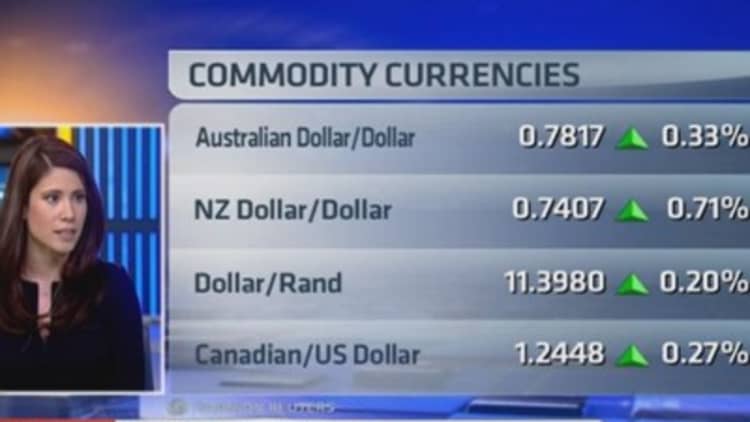The People's Bank of China's (PBoC) surprise cut to the reserve requirements of major banks is the latest sign of its shift towards more aggressive monetary easing, say economists who expect a lot more action in the coming months.
"A full RRR cut is generally viewed as the most blunt tool in the monetary policy tool box," Yu Song, economist at Goldman Sachs wrote in a note. "It sends a very strong signal of policy loosening."
Late Wednesday, the PBoC reduced the amount of cash that banks are required to hold as reserves by 50 basis points to 19.5 percent. The move, effective Thursday, is the first such cut since May 2012.
The cut is estimated to unlock 600-650 billion yuan ($96-104 billion) in liquidity, which analysts say will help counter the tighter liquidity from the recent capital outflows.
"This will provide a boost to confidence, which is likely positive for short-term demand growth, and should also help reduce the risks of a protracted period of undesirably low inflation," Song said.
After growing at its slowest pace in 24 years in 2014, China's latest economic data point to a continued loss of growth momentum in the new year.

The government's official manufacturing Purchasing Managers' Index (PMI), for example, dipped into contractionary territory for the first time in two and the half years in January, coming in at 49.8.
"We expected the PBoC would cut RRR in early March when the economic data for January and February become available. The PBoC did not wait to see the data, which suggests to us the economic momentum probably surprised on the downside for the government," said Zhiwei Zhang, chief economist and head of equity strategy, China at Deutsche Bank.
What's next?
With growth expected to slide further in the first quarter, Zhang expects more easing measures ahead, tipping another 50 basis point RRR cut in the second quarter and two interest rate cuts – in March and the second quarter.
Read MoreChina stimulus: Why it's now or never
Goldman Sachs agrees there's more easing in the pipeline.
"More RRR cuts are likely. With policymakers having demonstrated a willingness to use broad RRR cuts, we expect to see more, though the next may come with a significant lag (likely Q2)," Song said.
"With inflation falling there is also a case to lower benchmark interest rates to bring down high real interest rates. The timing of any benchmark rate cut will be data-dependent, but a cut before the end of the quarter is quite possible," he said.
Looking ahead, Mark Williams, chief Asia economist at Capital Economics notes policymakers will watch how the equity markets respond to Wednesday's move before formulating their next steps.
"As things stand, alongside further RRR cuts in coming months, we continue also to expect benchmark interest rates to be cut further – perhaps twice more by the middle of this year. That could change though if today's move ignites another equity market surge," he said.
The benchmark rose over 20 percent in the four weeks after the PBoC's interest rate cut on November 24.
The index opened up 2.4 percent on Thursday as investors cheered the central bank's move. It was last seen up 0.3 percent.


